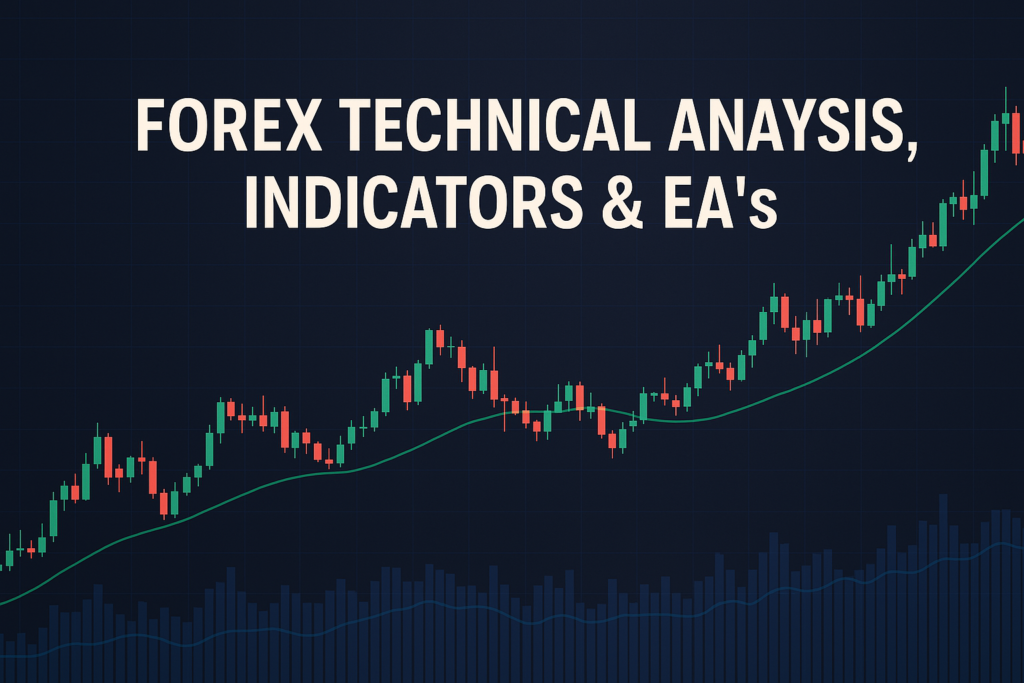
Use the moving average convergence and divergence to enhance your Forex trading strategies and improve your market analysis skills.
Imagine navigating through the bustling streets of a new city, unsure of where to go next. This is how many traders feel when they encounter the moving average convergence and divergence (MACD) in Forex trading. The MACD is an essential tool that helps traders identify trends and potential price reversals. But for beginners and even seasoned traders, understanding how to use it can be like deciphering a complex puzzle.
Many traders struggle with the MACD because it involves multiple moving averages and can seem overwhelming at first. The good news is that once you grasp the basics, this tool can significantly enhance your trading strategy. Understanding the MACD can lead to better decision-making and improved profitability in Forex trading.
In this article, we will dive into the world of moving average convergence and divergence, exploring its history, advantages, and practical applications. We’ll also provide strategies to help you utilize the MACD effectively in your trading journey.
The stochrsi formula is another tool that traders can use alongside the MACD to refine their strategies and enhance their trading performance.
What is Moving Average Convergence and Divergence?
The moving average convergence and divergence (MACD) is like a compass for traders. It helps them understand the direction of price movements and identify potential trading opportunities. In simple terms, the MACD shows the difference between two moving averages of a currency’s price. When the shorter moving average crosses above the longer one, it can signal a buying opportunity. Conversely, when the shorter moving average crosses below the longer one, it may indicate a selling opportunity.
Types of Moving Average Convergence and Divergence
There are different types of moving averages used in MACD calculations. The most common ones are:
- Simple Moving Average (SMA): This is the average price over a specific period.
- Exponential Moving Average (EMA): This gives more weight to recent prices, making it more responsive to changes.
- Weighted Moving Average (WMA): Similar to EMA, but with different weighting factors.
How Moving Average Convergence and Divergence Smooth Out Price Action
The MACD helps smooth out price action by averaging prices over time. This smoothing effect reduces noise in price movements and makes it easier for traders to identify trends. Think of it as watching a calm sea instead of turbulent waves; it allows for clearer insights into market behavior.
Common Periods Used and Why
Traders often use specific periods for MACD calculations, such as 12, 26, and 9 days. These numbers are popular because they provide a good balance between responsiveness and reliability. A shorter period may react quickly to price changes, but it can also generate false signals. A longer period might be more reliable but can miss some opportunities. Finding the right balance is key to effective trading.
The History of Moving Average Convergence and Divergence
Origin of Moving Average Convergence and Divergence
The MACD was created in the late 1970s by Gerald Appel, a well-known trader. He wanted to develop a tool that could help traders identify changes in momentum and trends in the market. The MACD quickly gained popularity due to its simplicity and effectiveness.
When Did Traders Start Using It Widely?
As the Forex market grew, more traders began embracing the MACD. In the 1980s and 1990s, it became a staple among technical analysts. Today, it is one of the most widely used indicators in Forex trading.
Real-Life Stories
Many professional traders have shared success stories involving the MACD. For example, a trader named Sarah used the MACD to spot a trend reversal in a currency pair, leading her to make a profitable trade. Her success story inspired others to learn and apply the MACD in their trading strategies.
Advantages and Disadvantages of Moving Average Convergence and Divergence
Advantages:
The MACD offers several advantages for traders, including:
- Helps identify trends easily: The MACD clearly shows the direction of price movements, making it easier for traders to spot trends.
- Useful for dynamic support and resistance: Traders can use MACD levels to identify potential support and resistance areas.
- Works well for crossover strategies: The MACD is effective in generating buy and sell signals based on moving average crossovers.
Disadvantages:
However, the MACD is not without its drawbacks:
- lags behind price movements: Since it relies on moving averages, the MACD may not react quickly to sudden price changes.
- Can give false signals in sideways markets: The MACD may produce misleading signals when the market is not trending, leading to potential losses.
How to Apply Moving Average Convergence and Divergence on MT4 & MT5
Step-by-Step Guide to Adding MACD on Charts
To add the MACD to your charts in MT4 or MT5, follow these simple steps:
- Open your trading platform and select the chart you want to analyze.
- Click on “Insert” in the top menu, then select “Indicators.” Choose “Trend” and find “MACD.”
- Adjust the settings if needed and click “OK.” The MACD will appear on your chart.
Customizing MACD Settings
You can customize the MACD settings to fit your trading style. Adjust the periods, colors, and types of moving averages to make the indicator more visually appealing and easier to read. Experimenting with these settings will help you find what works best for you.
Saving Templates for Easy Application
Once you have customized the MACD to your liking, save it as a template. This will allow you to apply the same settings to other charts with ease, saving you time in your trading sessions.
5 to 7 Trading Strategies Using Only Moving Average Convergence and Divergence
All Time Frame Strategy (M5 to D1)
This strategy works across various time frames, making it versatile for different trading styles. Traders look for MACD crossovers to enter trades. For example, if the MACD line crosses above the signal line, it’s a buy signal. Conversely, a crossover below indicates a sell signal.
Trending Strategies
In trending markets, traders can use MACD to confirm the trend’s strength. Buy when the MACD is above zero, and sell when it’s below zero. This strategy helps traders ride the trend for maximum profits.
Counter Trade Strategies
Counter-trading involves taking positions against the prevailing trend. Traders can use MACD divergences to spot potential reversals. For instance, if prices are making higher highs while the MACD is making lower highs, it could signal a reversal.
Swing Trades Strategies
Swing traders can use MACD to identify potential entry and exit points. Buying when the MACD crosses above the signal line and selling when it crosses below can lead to profitable trades in swinging markets.
5 to 7 Trading Strategies Combining Moving Average Convergence and Divergence with Other Indicators
All Time Frame Strategy (M5 to D1)
This combined strategy uses the MACD alongside the Relative Strength Index (RSI). Traders look for MACD crossovers and confirm them with RSI levels. For example, a buy signal is stronger if the RSI is above 50 when the MACD crosses above the signal line.
Trending Strategies
In trending markets, combining MACD with Bollinger Bands can enhance trading decisions. Traders buy when the MACD shows upward momentum and price touches the lower Bollinger Band, while selling occurs at the upper band with MACD signaling a downward trend.
Counter Trade Strategies
Traders can use MACD with Fibonacci retracement levels for counter-trading. When the price retraces to a Fibonacci level and the MACD shows divergence, it can indicate a reversal opportunity.
Swing Trades Strategies
Combining MACD with moving averages can provide additional confirmation for swing trades. A buy signal occurs when the MACD crosses above the signal line while the price is above the moving average.
For further insight, check out our GBPJPY Forecast Analysis, which discusses future trends and strategies.
Top 10 FAQs About Moving Average Convergence and Divergence
1. What is MACD?
The MACD is a technical indicator that shows the relationship between two moving averages of a currency’s price.
2. How does the MACD work?
The MACD works by calculating the difference between a short-term and a long-term moving average, signaling potential buy and sell opportunities.
3. What are the main components of the MACD?
The MACD consists of the MACD line, the signal line, and the histogram, which represents the difference between the two lines.
4. How do I interpret MACD signals?
Buy signals occur when the MACD line crosses above the signal line, while sell signals happen when it crosses below.
5. Can I use MACD in all time frames?
Yes, MACD can be used in various time frames, making it suitable for different trading styles.
6. What are the limitations of MACD?
MACD may lag behind price movements and can give false signals in sideways markets.
7. How can I improve my MACD trading?
Combining MACD with other indicators, like the RSI or Bollinger Bands, can enhance your trading decisions.
8. Is MACD suitable for beginners?
Yes, MACD is easy to understand, making it a great choice for beginners in Forex trading.
9. What is the best MACD setting?
The common MACD settings are 12, 26, and 9, but experimenting with different settings can help find what works best for you.
10. How can I practice using MACD?
Using demo accounts is an excellent way to practice trading with MACD before risking real money.
Conclusion
In summary, understanding the moving average convergence and divergence is essential for any Forex trader. This powerful tool can help you identify trends, spot potential reversals, and make informed trading decisions. Remember to practice using the MACD in a demo account before trading with real money. Happy trading!
Get a broader view of this strategy with help from top sources IG Group, Trading Point (XM)
Expand Your Knowledge
- 📌 Forex Trading Learning Road Map
- 📌 Forex Trading Course with no Fees
- 📌 Forex Trading Issues, Problems, and Solutions
- 📌 Forex Daily Forecast & Live Updates
- 📌 Forex Fundamental & News Analysis: Tomorrow’s Market Movers & Trade Opportunities
- 📌 Forex Education Hub: Learn & Profit
- 📌 Forex Technical Analysis, Indicators & EA’s
Start Trading Today
Ready to take your forex trading to the next level? Open an account with Exness, one of the most trusted platforms in the industry. 👉 Sign Up Now and trade with confidence!
My recommended broker stands out with ultra-low spreads for beginners, instant withdrawals, and zero spread accounts for pro traders.
Trusted since 2008, lightning-fast execution, no hidden fees, and a secure, transparent trading environment—giving you the edge you need to succeed. 🚀
YouTube Video Library: Related Videos
Note: The video above is embedded from YouTube and is the property of its original creator. We do not own or take responsibility for the content or opinions expressed in the video.


